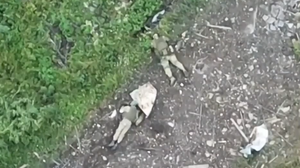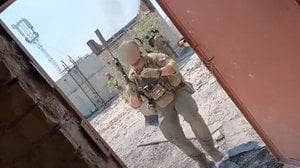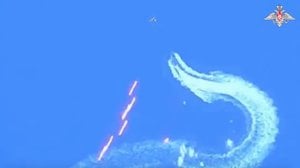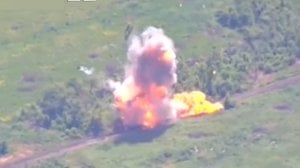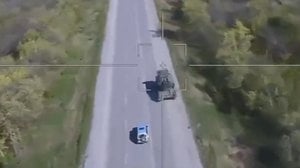
(NSFW) Avdiivka: DPICM Strikes Back
Published 1 years ago
So how much is enough? Cinematic footage of absolute carnage, courtesy of Ukraine’s 47th Brigade, yet another example of Russia’s foolhardy assaults slamming into Ukrainian defenses with the abrupt violence of a puppy smacked with a hammer. The first vehicle, probably a tank with a cope cage, strikes a mine and rolls to a stop before the fuel and ammo ignites. The view shift to seven armored vehicles winding their way through a shell-pocked landscape. As they carve a hairpin turn in the field the column is struck by Ukrainian artillery firing DPICM. The rear of the column is struck and a BTR disabled and disappears in a pilar of smoke as the crew distances themselves from the wreckage. An unseen target in the tree line is also hit by an ICM bomblet and sends a streamer of smoke across the field. A closer view of the scene reveals three disabled BTRs, surrounded by prone troops who are wounded, dead, or at a minimum having a remarkably bad day. Flame spurts from one of the vehicles as the fuel and ammunition cook off. Several dismounts flee and fall flat, likely cut down by automatic weapons fire. The cluster of disabled vehicles are struck by another barrage of DPICM, and one of the wounded BTRs convulses with smoke and flame, followed by another.
As at Vuhledar, timely and accurate artillery fire is a critical component of a successful Ukrainian defense. Effective shaping operations and aggressive counterbattery fires have whittled down the Russian advantage in artillery tubes, and the systems remaining have reduced accuracy which is attributed to worn tubes and low-quality ammunition. High quality systems, a variety of systems, and sensors providing accurate targeting data has given Ukraine a qualitative advantage in artillery, a critical blow for the Russian Army which entered the war as an artillery-centric organization. The Russians have also demonstrated deficiencies in planning and in the coordination of warfighting functions, and these senseless attacks in Avdiivka are an outstanding example. There is no indication that these assaults were preceded by shaping fires, that Ukrainian positions were targeted with indirect fire to suppress the defenders, or that Ukrainian artillery was neutralized with counter battery fire prior to the attack. Instead, Russian troops are shoved into the breach and cut down en masse.
And so I ask again, how much is enough? This question is not directed at Putin, or at the “nodding donkeys,” his loyal cronies. How much is enough for the Russian Army and the Russian people? The Institute for the Study of War (ISW) estimated that the Russians threw eight brigades against Avdiivka, all of which have been mauled or rendered combat ineffective. And yet, Russian troops continue to stagger forward, rather than rebel against their commanders or turn their weapons against the commanders who send them to slaughter. Several months ago, I predicted that continual losses could lead to mutiny and collapse of the Russian Army, and yet there is no indication that such a collapse is on the horizon. One thing is certain: as long as Russian units are suffering casualties as this rate, it is nearly impossible for the Russian Army to reorganize, reconstitute, and implement reforms based on lessons learned from the front. Negotiation or cease fire would allow them time to recover, and a revived Russian Army would present a grave risk to Ukraine and greater Europe. And so Ukraine must fight on, not to the last tank or the last artillery shell but to the last Russian conscript.
About the Author

Cam
Cam served as an infantry officer in the Marine Corps, deploying to the Horn of Africa and participating in combat operations in Iraq. He currently works in the maritime industry and in the defense sector as an instructor of combined arms planning and operations. An avid sailor, Cam founded and directs Triumph Sailing, a nonprofit that supports veterans and first responders through adventure and fellowship on the water. Triumph Sailing just completed its big yearly event, an offshore race in the Gulf of Mexico with an all veteran crew. You can support the mission and next year's sailing season at Tri-Sail.Org.



